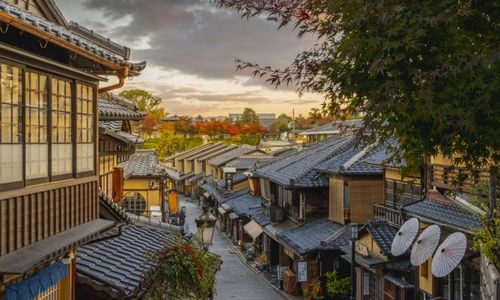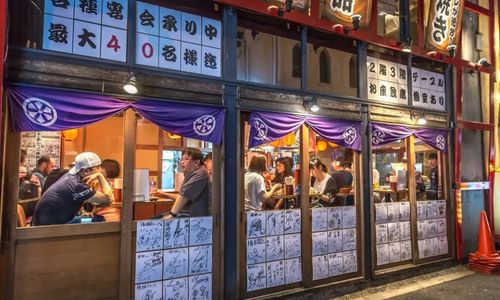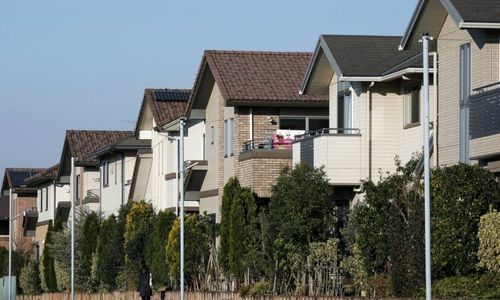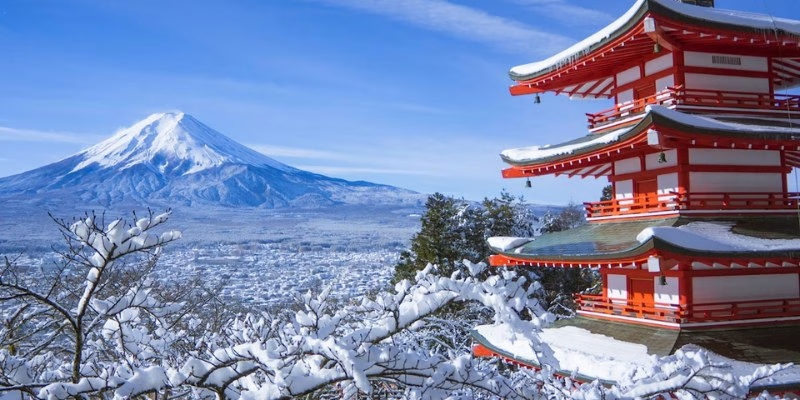Navigating Tokyo housing can feel overwhelming at first, but with the right approach, it becomes much easier. Whether you’re settling in for work, study, or long-term living, Tokyo has a mix of rental and ownership options to explore. From lively downtown spots to peaceful outer districts, there’s something for every pace of life. Taking time to understand the process will help you find a place that truly feels like home.
Understanding the Tokyo Housing Market
The Tokyo housing scene in 2025 is seeing notable shifts. While the average price of new apartments has slightly declined after years of steady growth, land values in prime areas like Ginza continue to rise. Meanwhile, outer districts such as Ome and Kodaira have experienced price surges due to growing demand for more spacious living environments.
Foreign investment in Japan’s real estate sector is on the rise, driven by a weak yen and low interest rates. In Tokyo, roughly 20% of luxury apartment transactions now involve overseas buyers. On the other hand, local residents are finding it increasingly difficult to afford homeownership as property prices outpace income.
Remote work has encouraged many Tokyoites to relocate to nearby prefectures like Saitama and Chiba, where housing is more affordable and space is abundant. At the same time, Japan’s aging population is pushing up the need for elderly-friendly housing solutions. Despite Tokyo remaining a key investment hotspot, analysts warn of potential real estate overvaluation if prices continue to rise faster than wages and rental yields.

Tokyo housing shifts, prices, and foreign investment
Cost of Living in Tokyo: What to Expect
Living in Tokyo offers convenience, safety, and a rich cultural environment, but it comes with costs that vary widely depending on your lifestyle. Below is an overview of typical monthly expenses for a single resident in 2025:
- Housing (Tokyo Housing Market): Renting a one-bedroom apartment in central Tokyo typically ranges from ¥170,000 to ¥223,000 ($1,150–$1,500). If you look outside the city centre, prices drop to around ¥97,500–¥127,000 ($660–$860). For those on a tighter budget, shared flats or older buildings offer more affordable options.
- Food & Groceries: Monthly grocery spending usually falls between ¥30,000 and ¥50,000 ($200–$330). If you eat out regularly, set aside an additional ¥10,000–¥30,000. A bowl of ramen costs around ¥800–¥1,000, while a convenience store bento can be as low as ¥500.
- Transportation: A monthly commuter pass typically costs ¥10,000 to ¥15,000 ($65–$100). Single rides on trains or buses run between ¥200 and ¥300. Many locals also cycle to work and school as a practical and economical option.
- Utilities & Communication: Basic utilities like electricity, gas, and water average ¥10,000–¥15,000 per month. Internet services range from ¥4,000 to ¥6,000, and mobile phone plans start at just ¥2,000.
- Entertainment & Personal Expenses: Spending on leisure activities such as cafes, movies, and outings usually totals ¥10,000–¥20,000 per month. Personal care and essentials add another ¥5,000–¥10,000. Thankfully, Tokyo is full of free attractions like parks, shrines, and seasonal festivals.
- Total Estimated Monthly Cost (for one person): Living costs in Tokyo average between ¥120,000 and ¥205,000 ($885–$1,400) per month. A modest lifestyle, cooking at home and taking advantage of public resources can significantly lower your expenses.
Comparing Income vs. Expenses: Can You Afford Life in Tokyo?
Living in Tokyo definitely comes with its perks, but it’s no secret that the city is quite expensive. On average, people take home about ¥544,000 a month after taxes, but many earn closer to ¥380,000, depending on their job and background.
When it comes to monthly costs, you’re looking at anywhere from ¥157,000 to ¥323,000 for rent, food, transport, bills, and some fun stuff. If you’re on the lower end of that income range, it can be tight to cover everything comfortably, and saving might feel like a stretch. That said, if your paycheck is on the higher side and you’re smart about spending, you can live well and even put some money aside for later.
The trick is to be practical: find a place a bit outside the city centre or share an apartment, cook at home instead of eating out all the time, use public transport or bike around, and enjoy all the free events and parks Tokyo has to offer. With a bit of planning and smart choices, living in Tokyo doesn’t have to drain your wallet; it can be an exciting and manageable adventure.

Living in Tokyo costs money, smart choices
Renting Options: From Compact Studios to Family Units
Tokyo caters to a wide range of housing needs, offering something for everyone from solo renters to growing families. Whether you’re drawn to the fast pace of city life or prefer quieter residential districts, there’s a rental option tailored to your lifestyle and budget.
- Studio Apartments (1R/1K): Perfect for singles or couples, these compact spaces usually measure between 15 and 25 m². In prime neighbourhoods like Shibuya or Minato, monthly rents typically fall between ¥80,000 and ¥120,000.
- 1-Bedroom Units (1LDK): These layouts provide additional space, generally spanning 30 to 50 m². In central areas, expect to pay around ¥150,000 to ¥230,000 each month. More suburban districts like Setagaya or Meguro may offer similar sizes at more affordable prices.
- 2-Bedroom Apartments (2LDK): Designed with small families in mind, these units cover about 50 to 70 m². Rental rates in central Tokyo often range from ¥250,000 to ¥380,000, while properties farther from the city centre can be easier on the budget.
- 3-Bedroom Residences (3LDK): Ideal for families needing extra room, these larger apartments begin at 70 m². Central locations can command over ¥500,000 per month, but the same size outside the core areas is typically more cost-effective.
- Fully Furnished & Serviced Options: For those who prioritise convenience, furnished rentals start from around ¥216,000 monthly. These often include furniture, appliances, and even cleaning services, ideal for short-term stays or busy professionals.
- Urban Renaissance Housing (UR): Operated by the government, UR Housing provides rental properties without requiring key money, renewal fees, or agent commissions, making the process simpler and more accessible.
When selecting your next home, weigh factors like commute time, nearby services, and overall cost. With its wide array of choices, Tokyo makes it possible to find the right fit no matter your stage in life or housing goals.
Buying Property: Apartments and Houses for Sale in Tokyo
Foreigners can legally buy property in Tokyo without a visa or Japanese citizenship. However, securing a mortgage requires a valid residence visa and proof of steady income. Prices vary by location and size, typically from ¥90 million to over ¥700 million. Buyers should also plan for extra costs, such as taxes, agent fees, and legal charges, adding around 5–8% to the total price.
Central areas like Minato, Shibuya, and Chiyoda are popular among expats, while quieter neighbourhoods like Setagaya or Meguro suit families. Odaiba is growing fast, but may carry some natural disaster risks. The process includes property search, financial checks, a 10% deposit, contract signing, and final payment. Since documents are usually in Japanese, using a trusted agent or translator is highly recommended.

Foreigners can buy Tokyo property with a plan
Where to Find Affordable Homes in or Near Tokyo
Finding a place to live in Tokyo doesn’t always mean paying sky-high prices. With the right location, you can enjoy the benefits of city life or peaceful suburbs at a much more reasonable cost. Here are some great areas to consider if you’re working with a tighter housing budget:
Here are some of the most budget-friendly neighbourhoods within Tokyo that offer a balance of accessibility, comfort, and value, perfect for those looking to stretch their housing budget without sacrificing quality of life:
- Katsushika (葛飾区): A culturally rich area with a traditional feel. It’s one of Tokyo’s more affordable wards, with average property prices around ¥300,000 per square meter—great for those who value a local vibe and community living.
- Adachi (足立区): Located in Tokyo’s northeast, Adachi blends affordability with livability. Homes here go for about ¥350,000/m² and the area offers plenty of parks and a calm, residential atmosphere.
- Edogawa (江戸川区): This riverside district is ideal for those seeking a slower pace within city limits. With average housing prices around ¥400,000/m², Edogawa is popular among families and older residents.
- Itabashi (板橋区): Situated in northern Tokyo, Itabashi offers an urban-suburban balance with decent train access and developing infrastructure. Prices hover near ¥450,000/m².
Affordable Suburban Areas Near Tokyo
If you’re open to living just outside central Tokyo, several nearby suburban areas offer excellent value while keeping you well-connected to the city. Here are a few options where affordability meets convenience:
- Minami-Funabashi (Chiba): Roughly 30 minutes by train from Tokyo, this area offers rents starting around ¥53,000/month. It’s a calm, commuter-friendly location with easy access to shopping and transit.
- Matsudo (Chiba): Located just 27 minutes from the city centre, Matsudo strikes a great balance between accessibility and affordability, with average rents at about ¥62,000/month.
- Warabi (Saitama): Less than 30 minutes from Tokyo, Warabi is a popular choice for budget-conscious renters. With average monthly rent around ¥61,000, it also offers a close-knit, welcoming community.
Beyond Tokyo: Cheaper Cities to Consider Living In
If you’re looking to live somewhere more affordable than Tokyo, here are some great alternatives to consider, each offering a unique lifestyle and price range:
- Sapporo: Known for its crisp winters and beautiful natural surroundings, Sapporo offers a peaceful lifestyle with rental prices typically ranging from ¥50,000 to ¥80,000 per month. It’s perfect for nature lovers who enjoy clean air and a slower pace.
- Okinawa: For those who prefer a tropical vibe, Okinawa delivers warm weather, beachside living, and a relaxed atmosphere. Rent usually falls between ¥50,000 and ¥70,000 monthly, making it ideal for anyone drawn to ocean views and a laid-back lifestyle.
- Nara: A quiet, culturally rich city surrounded by nature. Rent here is comparable to that in Sapporo and Okinawa. Nara is a great fit for those seeking serenity, history, and a strong connection to tradition.
- Kawasaki: Located just about 40 minutes from central Tokyo by train, Kawasaki offers a convenient commute at a more reasonable cost, and rents typically range from ¥60,000 to ¥80,000. It’s an excellent choice for Tokyo-based workers looking to cut expenses.
- Tsushima: A small, remote island known for its incredibly low living costs, rents can start from just ¥40,000. However, job opportunities are limited, so it’s best suited for those wanting a quiet, minimalist lifestyle.
When choosing a place to live, consider factors like transport access, nearby amenities, safety, and your overall budget to ensure comfort and convenience. If you’d like help exploring your options further, I’m happy to assist!
Navigating Japan’s Healthcare System as a Resident
When living in Japan, it’s important to understand the country’s universal healthcare system, which includes two main types: Employee Health Insurance (Shakai Hoken) and National Health Insurance (Kokumin Kenko Hoken). Full-time employees are usually enrolled by their employer, while others, such as freelancers or part-time workers—must register at their local city or ward office. With a health insurance card, you’ll typically pay only 30% of medical costs.
Most hospitals and clinics accept public insurance, though smaller facilities or those in rural areas may have limited English support. In case of an emergency, dial 119 for immediate medical assistance. Japan has also linked health insurance cards with the My Number system, making it easier to access medical services.
Always carry your insurance card when visiting a doctor, and contact your local office if you have questions or need help. Being familiar with how the healthcare system works can give you peace of mind while living in Japan.

Japan’s healthcare system, insurance types, and tips
Conclusion
Living in Tokyo requires careful planning, especially when it comes to housing and daily expenses. Understanding the real estate landscape, whether you choose to rent or buy, and identifying cost-effective neighbourhoods can make a big difference in your budget. It’s also essential to familiarise yourself with Japan’s healthcare system to ensure smooth access to medical services.
If you’re considering investing in property in Japan, feel free to reach out to Arealty.jp for professional guidance and free consultation from their experienced team.






Leave a Reply